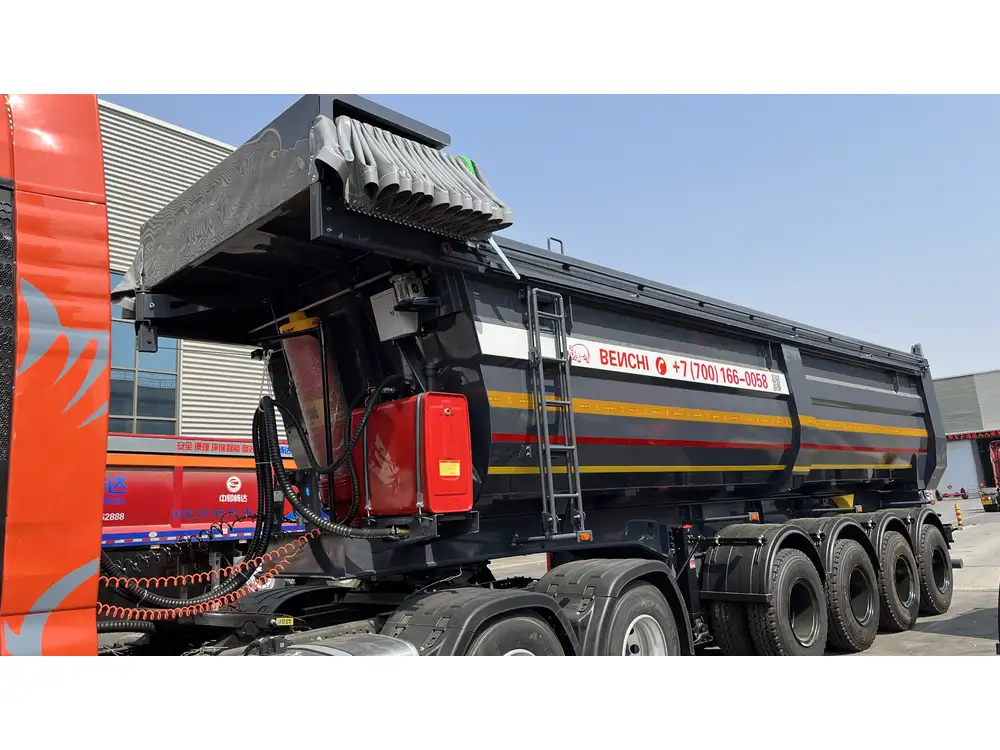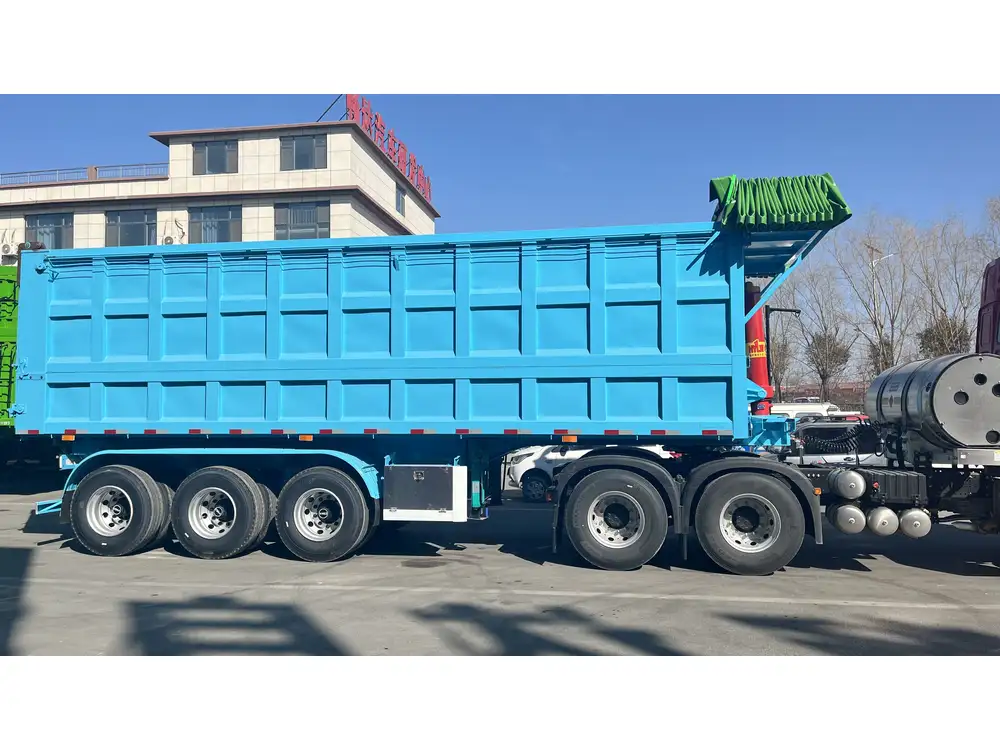Transforming an old dump truck into a functioning dump trailer is an audacious yet rewarding endeavor. This guide provides an in-depth look into the process, discussing critical components, methods, and considerations necessary for a successful conversion. Whether you’re a seasoned mechanic or a DIY enthusiast, this comprehensive walkthrough will equip you with the knowledge and practical steps needed for this project.
Understanding the Basics of Dump Trailers
Before diving into the conversion process, it’s essential to understand what a dump trailer is. A dump trailer is essentially a trailer designed to transport materials, typically featuring an open box and a hydraulic lift that allows the bed to tilt, thereby enabling the unloading of its contents. It’s widely used in construction, landscaping, and agriculture due to its efficiency in transporting bulk materials like soil, gravel, and debris.
Key Features of Dump Trailers
- Hydraulic System: Enables the tilting of the trailer bed for dumping cargo.
- Durable Frame: A robust structural framework capable of handling significant weight.
- Axle Configuration: Determines load distribution and towing capacity.
- Bed Material: Typically features materials designed to withstand heavy abuse, such as steel or aluminum.

Benefits of Converting a Dump Truck to a Trailer
- Cost Efficiency: Repurposing an existing vehicle can significantly lower costs compared to purchasing a new trailer.
- Customization: Tailor the dimensions and specifications to better meet specific needs.
- Resource Utilization: Make use of a vehicle that might otherwise be rendered useless, promoting sustainability.
Assessing the Old Dump Truck
Before embarking on the conversion journey, detailed assessment of the old dump truck is crucial.
Step 1: Condition Evaluation
- Structural Integrity: Check for any rust, cracks, or signs of deterioration, especially on the frame.
- Hydraulic System Functionality: Ensure that the existing hydraulics are operational and capable of lifting the trailer.
- Tire and Axle Condition: Inspect tires for wear and tear and check axles for damage.
| Component | Inspection Checklist |
|---|---|
| Frame | Look for rust, dents, or frame bends |
| Hydraulic System | Test pump and cylinder functionality |
| Tires | Measure tread depth and check for leaks |
| Axles | Ensure there are no visible damages |

Step 2: Inventory of Components
Identify and list all components you will need in the process, including but not limited to:
- Trailer hitch
- Support beams
- New bed materials (if needed)
- Hydraulic lines
- Electrical wiring for lights
Conversion Process: Step-by-Step Guidance
Transforming an old dump truck into a dump trailer involves several key steps.
Step 1: Remove the Dump Bed
Tools Required: Wrenches, hydraulic jack, and saw.
- Raise the Dump Bed: Use the hydraulic system to elevate the dump bed.
- Disconnect: Carefully disconnect the hydraulic lines while ensuring that any remaining fluid is contained.
- Unbolt the Bed: Remove the bolts securing the bed to the truck chassis.
- Lower the Bed: With assistance or a crane, safely detach the bed from the truck, ensuring to maintain control.

Step 2: Fabricating the Trailer Frame
Materials Needed: Steel tubes and flat plates, welding wire, paint for rust prevention.
- Design the Frame: Sketch a design considering the dimensions you desire. You’ll need to create a new frame to support the bed.
- Build the Frame: Cut steel tubes to the required lengths and weld them together to form a robust frame. Consider reinforcing areas that will bear the load.
- Paint the Frame: Apply rust-resistant paint to prevent future corrosion.
Step 3: Mounting the Bed to the Frame
- Positioning: Place the dump bed onto the newly fabricated trailer frame.
- Securing: Use bolts or welds to attach the bed securely to the frame, ensuring all connections are tight.
Step 4: Installing the Hydraulic System
Components Needed: Hydraulic pump, cylinder, hoses, and fittings.
- Hydraulic Pump Setup: Install the hydraulic pump on the trailer. It can be mounted on the frame for stability.
- Attach the Cylinder: Connect the hydraulic cylinder to the underside of the dump bed. Ensure that it aligns correctly with the bed to facilitate lifting.
- Connecting Hoses: Securely attach hydraulic hoses and ensure they are free of leaks.

Step 5: Electrical System Installation
- Wiring: If lights were on the dump truck, you’ll need to reconnect or replace them for trailer regulations.
- Battery Setup: Install a battery that powers the hydraulic system if it is operated independently from a vehicle.
- Switch Installation: Add a switch to control the hydraulic lift. Ensure it is easily accessible when operating the trailer.
Step 6: Final Checks and Testing
- Tilt Test: Conduct a test lift to ensure the hydraulic system functions smoothly. Gradually check the lift height and stability.
- Road Test: If applicable, hitch the trailer to the towing vehicle and check for any sway or instability during movement.
- Weight Test: Load the trailer with a manageable weight and test dumping functionality to ensure everything operates as intended.
Safety Considerations
Transforming and using a dump trailer involves inherent risks. To ensure safety during the conversion and operation:

Personal Protective Equipment
- Always wear protective goggles when cutting or welding.
- Use gloves and steel-toed boots to safeguard against injuries.
Working Area Safety
- Ensure your workspace is clean and organized.
- Use hydraulic lifts cautiously, ensuring weight restrictions are adhered to.
Regular Maintenance
- Conduct regular checks on the hydraulic system and wiring to ensure they remain in optimal condition.

Troubleshooting Common Issues
Despite diligent preparation and execution, problems may still arise during or after the conversion process. Here are several common issues and their solutions:
Hydraulic Problems
- Issue: Hydraulic lift won’t function.
- Solution: Check for leaks in the hoses or ensure the pump is primed correctly.
Tilting Problems
- Issue: Bed fails to tilt evenly.
- Solution: Check that the cylinder is correctly positioned and that no mechanical binds exist.

Towing Stability
- Issue: Trailer sways when towed.
- Solution: Verify load distribution and ensure that the hitch is appropriately rated for the weight.
Conclusion
Repurposing an old dump truck into a dump trailer is an ambitious project that can yield incredible utility and savings. This guide has laid out a detailed methodology from the evaluation of the truck’s condition to the final checks after installation. By following these steps meticulously and observing safety protocols, you can successfully create a dump trailer tailored to your needs, offering you a practical and cost-effective solution for material transport. Furthermore, this transformation not only bolsters your operational capacity but also embodies sustainability through the effective reuse of existing materials. Happy building!
Note: Always refer to local regulations for trailer specifications and safety requirements before operating your newly built dump trailer.



